Joyful Juggling Frenzy: Wes Peden in Rollercoaster

An interview with Wes Peden about his concept solo show
[by Elena Stanciu and Valentina Barone]
Early in 2024, we saw Wes Peden with Rollercoaster at SMELLS LIKE CIRCUS in Gent. On the stage of the Theaterzaal at VierNulVier, Wes Peden’s inflatable, bright blue scenography, and countless juggling objects represent the pop-punk break with velvet cushions, marble walls, and golden leaf ornaments we can imagine this hall has been waiting for. Wes’ work possesses, in fact, this quality of disruption–through colour, high energy, unique tempo, and equally dynamic sound and light design. Superlative aesthetics match the artist’s dedication to pushing the technical limits of juggling, nurturing the audience’s search for stories and connection with the art. In this interview, we hear more from Wes, on his inspiration, aesthetics and style, as well as details about the process behind creating Rollercoaster, a beautiful, colourful juggling frenzy, layered with autobiographical elements and the artist’s distinctive joyful mood.
What (still) excites you about juggling? What excites you about the future of juggling?
Wes Peden: What interests me about juggling is always changing. What makes me hyped to create and train now is completely different from what it was two, five, or ten years ago. I also draw interest from other things in life that I'm interested in at the time. For a while, I was super into voguing and electro dance and I was inspired by the paths that their bodies would make or the concepts they would use, and I tried to bring it into my juggling. These days, I'm really into making collages with different coloured papers. I realised that some elements in this, such as balancing proportions or the combinations of sharply angled shapes and round shapes that go into composing flat shapes are often inspiring in my juggling. I find myself asking: what's a sharp juggling trick? What's a round juggling trick? When do those feel balanced? Trying to translate these ideas from one world into the other is very exciting. It always gets me kind of hyped to see if I'm going to find some juggling that looks really different because maybe no one's gone from that angle into the juggling before.
As for the future of juggling, I'm excited about people's juggling that gets personal to them. When I see juggling that's just a wine glass sliding around a small board or someone doing foot juggling while tied up in aerial rope, or doing pen spinning techniques with three devil sticks, just juggling that gets nerdy and get deep into it and make stuff that you wouldn't see from anybody else, because they’re not just learning tricks, they develop a new technique through which you can see their personality. I’m excited to see more and more deeply personal juggling!
Jugglers are known for not turning juggling on and off, but living it all the time. Do you recognize it in your own life? Perhaps in your relationship to everyday objects?
Wes Peden: For sure! I do have that classic juggler desire to throw around my credit card or my phone, or spin pens, or flip stuff in the kitchen. I've also noticed that one thing that's less visually relevant as an aspect of juggling is organising events in time. I throw an object up and I know I have exactly this many milliseconds before it comes down again, and I have enough time to do two other throws before I need to spot it and catch it. I realise that the same part of my brain that's tickled by doing something like that is also interested in starting the eggs and then seeing if I can shower and be back before they are done, or if I start the laundry and then go to the grocery store, then go to the post office. Can I get back exactly when the laundry is done? There are these little timers that I’m interested in; lining up all the different things I can do while one task is “up in the air” – it’s very funny to realise that this is juggling.
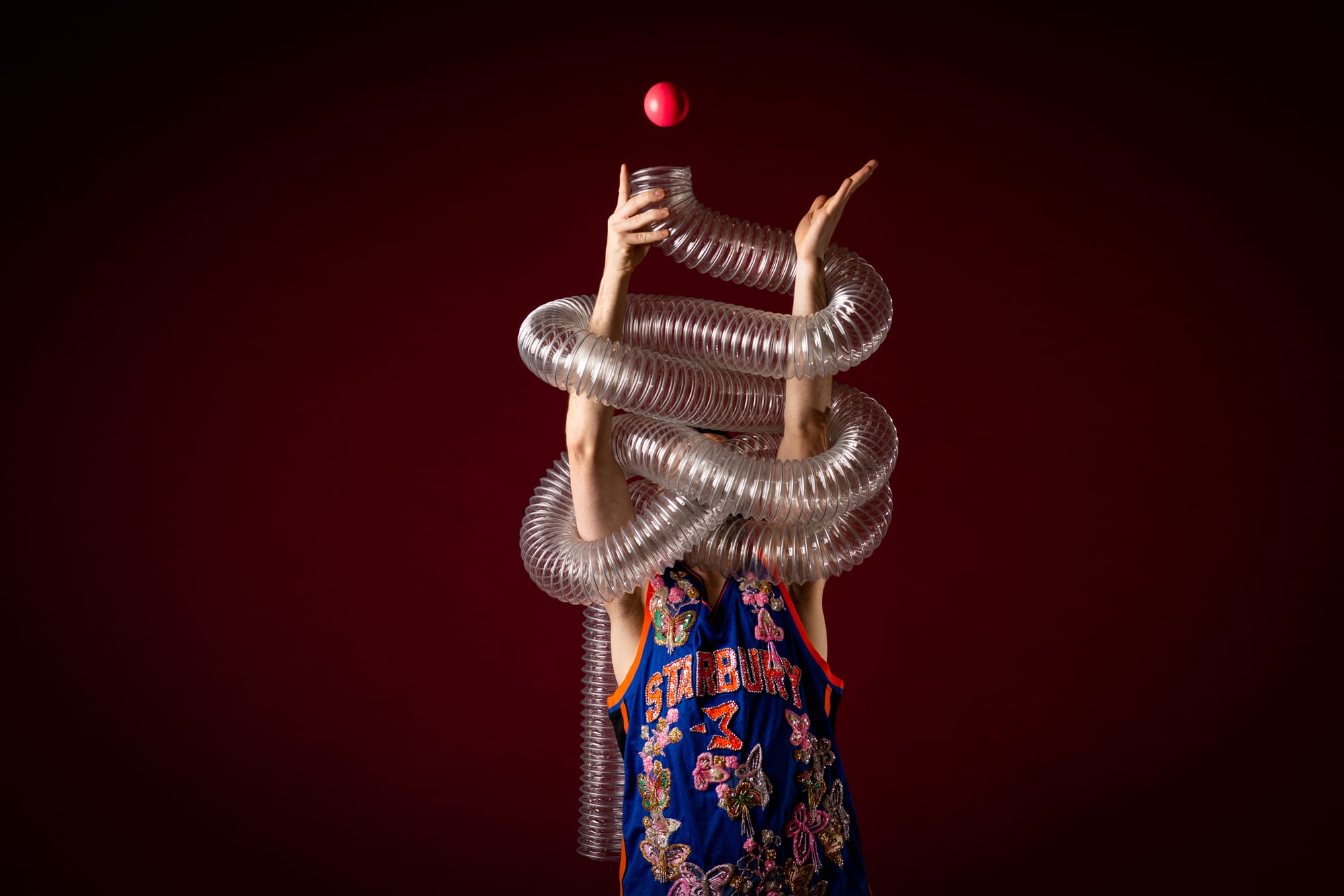
How would you describe your juggling style/vocabulary? How did you navigate to the pop-punk style that characterises your work and how did it come about?
Wes Peden: I would describe my style as energetic, playful and curious. I'm also known for using many different objects, including classic juggling objects, balls, clubs, rings, devil sticks, diabolos, and everyday objects, such as records, jump ropes, and wine bottles. I also design my own objects, for instance, the inflatables, tubes and clubs attached by ropes that you see in Rollercoaster. I'm also very interested in diving deep into a specific concept of juggling, or one technique. For example, rings spiralling up and down my arms, or balls bouncing specifically off my elbows, I like exploring all the different directions a technique can stretch, and then composing them to try to make a juggling piece and narrative around how the object and my body work together. I’m also interested in how this narrative evolves, and trying to have this abstract narrative be more the focus, rather than the technique. If by technique we mean the level of difficulty, I’d rather keep the focus on the story of how the juggling works and evolves. I'm always happy if the audience can forget for a while about the difficulty of what I'm doing, and just follow the ideas, the patterns and the function of the juggling and get more absorbed in that and not just the skill.
How did you navigate to the pop-punk style that characterises your work and how did it come about?
Wes Peden: I think it comes from my childhood, from growing up in the USA in the late ‘90s and early 2000s. There was a lot of colourful energy around that time. I loved Sonic the Hedgehog and skateboarding, flame shirts, Hot Wheels, Pop Tarts spiked hair, that sort of thing. I felt it was a bit crazy, but, at the same time, a little cartoonish, a little bit aside from whatever was happening in the real world. It was just big energy, fun and over-the-top cheesy vibes. Somehow I liked that aesthetic, especially on top of things I care a lot about and have put a lot of time in. I think that artistically serious things can also have a playful aesthetic; just because it looks like laundry detergent, it doesn't mean it's not an artistic idea.
Jugglers such as Sean McKinney and Jay Gilligan had a huge influence on me. I watched their videos around the time that their style was dyed hair, ripped jeans and juggling that wasn't the gentleman juggler or comedy unicycle style I saw around when I was a kid. They were kind of punk, skateboarding while juggling and doing things differently. That was a big inspiration to me growing up as well.
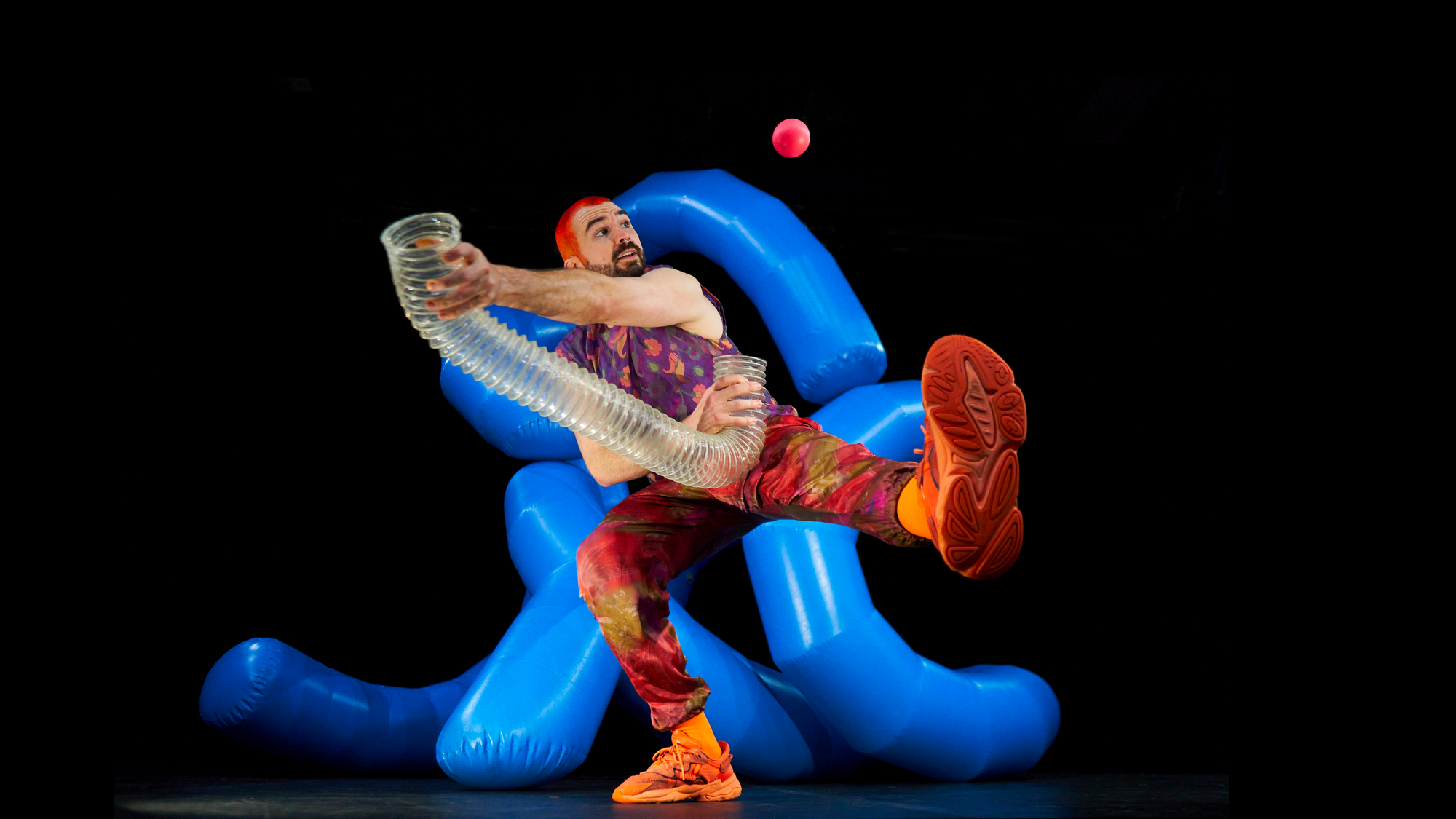
You have a very distinct aesthetic that seems to bleed into your personality and human presence off-stage. What role do colour and styling play in your work and in how you stage your technique?
Wes Peden: I find styling and colour very connected to the work I do. Of course, if I'm trying to make juggling that's engaging to look at. What I wear, the colour of the clubs, the colour of the set and of the light become relevant to this, and in the end, I see it as one thing, for which I’m looking for cohesion. As a kid, I was into wearing crazy patterns and surprising combinations, and I found it fun to put on something that made people see how you felt on the inside. There’s always been something that sparked things in my brain and made me curious to experiment with combining patterns and colours in different ways, to try to make other people feel that way as well. What I wear in my day-to-day life is kind of the same side of my brain that makes the shows. I am showing that both on stage and off stage, it's just something I'm going to do no matter what because I love it.
Technique and aesthetics in juggling are bound; it is the technical elements that create beautiful patterns and produce visual pleasure. Can you share a bit about your process with the two sides of creation–do you start technically, and let it construct the aesthetics, or do you ever start with a certain image in mind?
Wes Peden: I can start from two different directions and bounce back and forth in the way I look at them. Sometimes my ideas start from a very concrete way of throwing or catching an object or a pattern I am curious about. That becomes a starting point and I dive into researching every way that it can be expanded, with more objects, fewer objects, different sorts of objects, different patterns, and so on. I film this process, and then I take a step back and try to change the way I view it and just think of how it is visually; I’m not looking at the mechanics of the juggling, but trying to understand what the aesthetic is giving and where it can go next. Then I write variations to try out, go back in the studio and think technically about how to make those ideas happen.
Other times, I start with something more abstract, such as my inspiration from the collage work I mentioned above, or a dance movement, to which I add objects. It kind of starts from a visual that I'm looking for, or a feeling that something else gives me, and I add to this experiment with the throwing technique. I always film the process and try to look back at it from a very technical standpoint or a more abstract aesthetic standpoint and write things to do next. I film again, refine it and dive deeper, to look for the essence of what that thing wants to be.
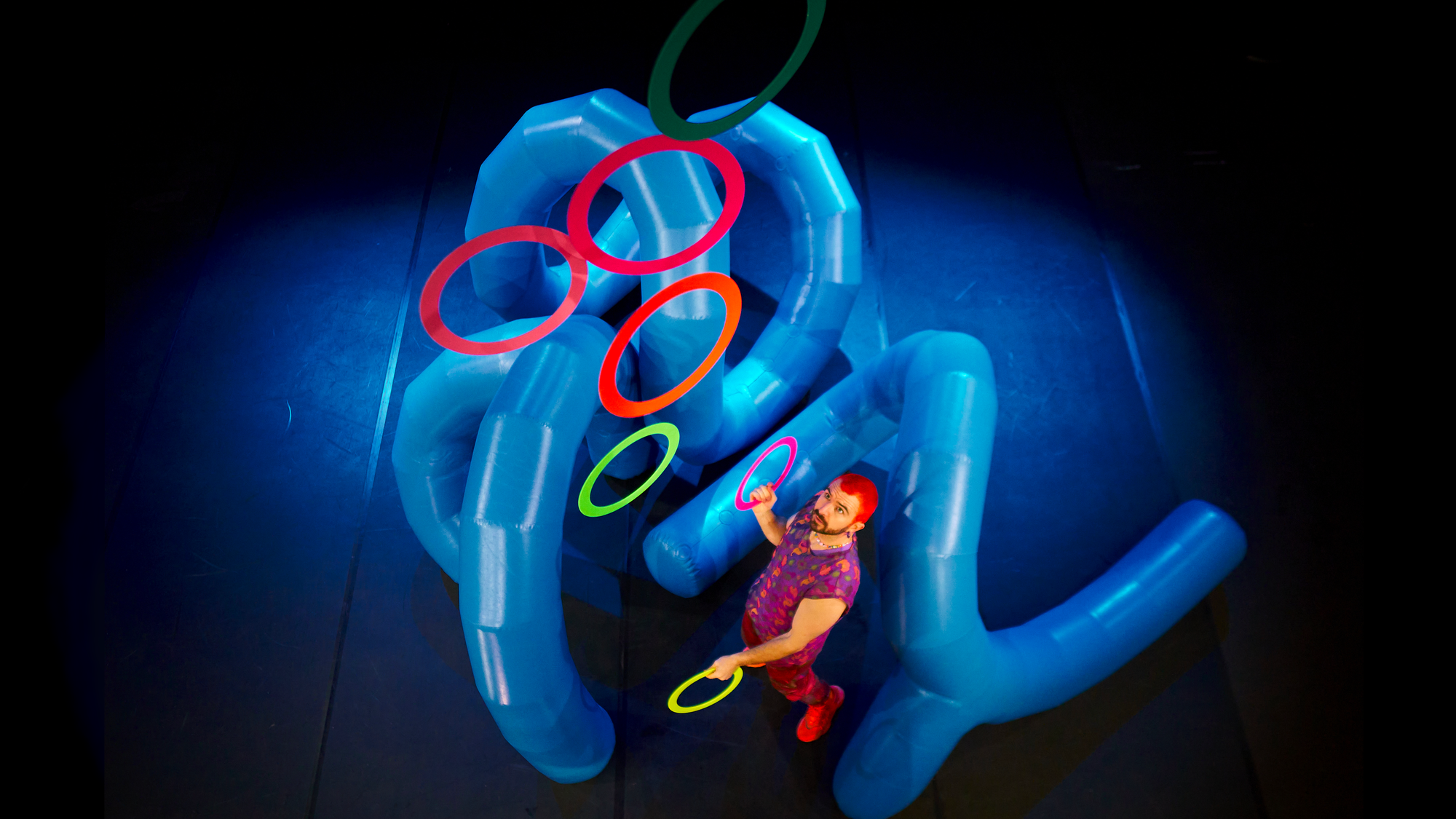
Rollercoaster is a joyful universe, in which scenography (inflatable, playful, colourful) is very present. How did you design it? At what stage in the process did it become a part of the creation?
Wes Peden: The essence or the genesis of the set design was playing a game called RollerCoaster Tycoon, where you build roller coasters, going piece by piece about which part you want to add next to the roller coaster. You'll see pop-up images with options for what you might want next: A straight piece, a spiral, a loop, a corkscrew, a helix. I found it very magical to see those individual pieces; it kind of represented the artistic relationship to roller coasters, and all of a sudden I could be the person building and designing an experience for the passengers, not being the passenger myself.
It was one of the moments when I realised that designing roller coasters, at least for the designer, is very similar to juggling or making a show and composing tricks. I wanted the set design to represent those individual pieces of roller coasters. I first just did some sketches of the pieces as they were in the game, and made them more abstract.
Then, I made them out of Play-Doh and sent pictures of those little Play-Doh shapes to Félix Chameroy, a designer and architect specialising in inflatables. Felix reworked and expanded on these starting points to create the final modules. He cleverly designed them to interlock in a few different ways that have made them extra fun to work with. That’s how they came to be. I had them from the beginning of creation when all the juggling started going together into the show so I could work them in. It's been really special in general to have an object larger than my body I can still juggle with. Also, it is lucky to have it as an inflatable object, so it's light enough for touring.
How do you build/project a relationship with your audience? In Rollercoaster there’s a strong autobiographical, storytelling dimension, which reveals a bit about you to the audience. Can you elaborate on how you integrate autobiography into your pieces?
Wes Peden: The theatrical premises of my shows are very simple. Usually, I find some juggling that I'm very interested in and excited about, and I'd like to share it, so it’s a bit like a show-and-tell presentation that I've put a lot of work into.
I've been juggling my whole life since I was five years old, and I see juggling in a different way than people coming to my shows. That’s why I try to compose the juggling and the show in a really welcoming way; I assume that people don't know as much about juggling as I do or aren't as invested in it, and I try to present things in a way that will make them as invested in it as I am.
I think hearing how I see juggling and hearing who I am can sometimes help people see juggling the same way I do, which is why I tend to add some autobiographical notes or introductions of myself and how I view the world.
You translate the spoken word pieces in Rollercoaster. What is the function of the monologues in supporting the expressive capacity of the juggling in the show?
Wes Peden: I have often been to see shows that have a Q&A time afterwards, where the artist explains the ideas behind different parts of the show and what inspired it. I always enjoyed those and wondered why those concrete explanations weren't in the show. I love the fact that juggling is an interpretive art form, and some of the beauty of the work is seeing whatever you want in it. But I also find that the aspect of giving some backstory during the piece, or a viewpoint, a parallel metaphor to what’s being seen doesn't take away anything from the interpretive side. You can still see whatever you want, and have room for interpretation, even with that. I find it particularly useful in circus, which can often be misinterpreted to think that we are just trying to impress the audience with our technique. If I give a starting point for the show that can help interpretation, I think that can be a useful guide in opening the door for audiences to see the work as not just keeping objects off the floor in a skilful way, but maybe connecting with the work beyond technique.
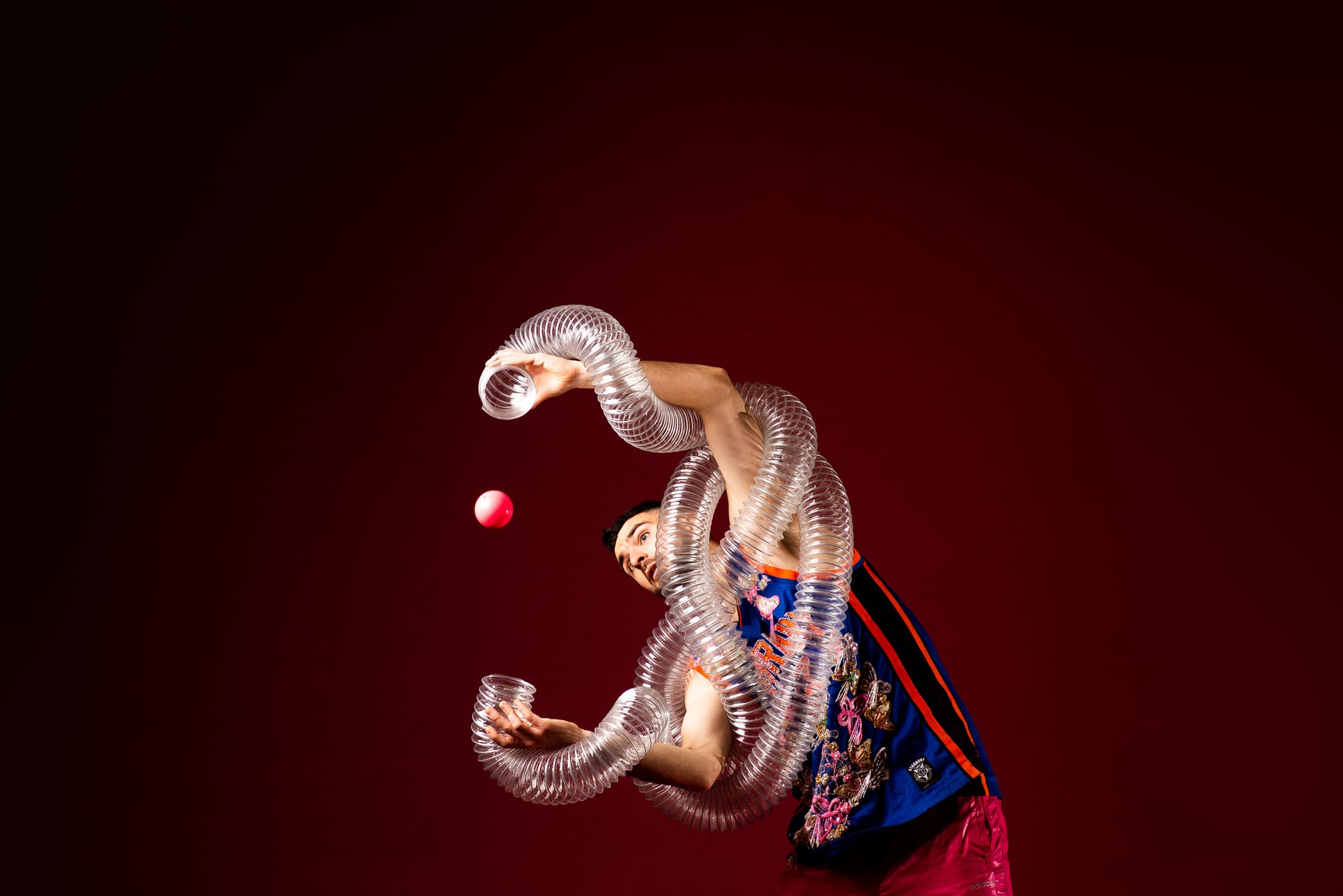
We learn from your show that your love for roller coasters reveals your upbringing. In Europe, we do not have many examples of amusement parks, therefore our collective memory is not so strongly tied to them. What other differences do American circus artists perceive when they live and work in Europe? How do you experience European circus or juggling as an American?
Wes Peden: I grew up in the USA, performing with my dad, who is also a juggler, and when I was around 11 or 12, we did a comedy juggling show. I also went to a juggling club a few times a week, watched juggling videos and read juggling books. And none of those had anything to do with circus. I just felt I'm a juggler and that's its own thing, kind of how magic used to be a lot more linked with circus, but now the magician community is kind of its own thing, although sometimes they're linked. As a kid, I could see that there were jugglers in circus, but I didn't really feel like a circus artist myself.
Coming to Europe at 18 years old to go to a circus school I saw all the different ways circus could be beyond just Ringling Brothers and Cirque du Soleil, and how much space circus had to be something not only for little kids and in a certain style. The fact that you could do whatever you wanted with it made me start to see myself as a circus artist as well, especially because the school I attended was not a juggling school, it was a circus school. I think that was the biggest shift in moving to Europe – the way I saw circus and juggling in connection and thereby my connection with circus through juggling.
There’s a common understanding that the end-object of juggling is not failing, not dropping. In Rollercoaster there’s a scene where you seem to tease this idea of failure. Is this something you reflect on? Or research, or something that interests you – to reshape how we think of failing a trick/dropping?
Wes Peden: I agree that this is often the subconscious premise of juggling. I found that especially when making an hour-long juggling show, it's very relieving to be able to change that set of invisible rules and make a scenario where things falling is not a problem. It's not just a crisp choreography the entire time, although those can be quite satisfying. But during a full show, it's very nice for an audience to have that premise shift and remove this kind of invisible tension of needing everything to be perfect and clean. It's been very rewarding to be able to find this ‘pick your own adventure’ type of game almost, where, if I drop a trick, then that will trigger a specific action, and if I nail the trick, then that will trigger a different action. And I think that can be very fun for the audience to watch, to have, um, a different set of rules. And, also very relieving for me to have one part of the show that can have a premise, but have a lot of leeway for things to not go exactly according to the millimetre of the plan.
Do you think we need a new mindset for success and failure in circus or juggling?
Wes Peden: I wouldn’t go as far as to say that we need a new mindset, but I do think it's interesting to take a look at the underlying assumptions of a technique; play with those assumptions and see if there is some way to still do the discipline, but without the constraints of those premises, or to change the rules a little bit. I think it could be an interesting way of looking more critically at any discipline and seeing what art comes out of it.
What is your relationship to the history of juggling and maybe a lineage of techniques? Where do you position yourself along this lineage, and what role does mentorship play to you (for example, your relationship with Gandini Juggling)?
Wes Peden: Sean Gandini and Kati Ylä-Hokkala from Gandini Juggling have been real trailblazers in bringing contemporary juggling to the public and a huge success story. I love them dearly, and I'm very grateful that they support my work and provide the infrastructure to tour it. It's incredible what they've done with their company. In terms of my inspiration, as I mentioned before, Jay Gilligan, Sean McKinney, and Sakari Männistö have been huge examples for me. I am inspired by their research and development of different juggling techniques and methods for creating technique and the skills of making solo shows. As examples of how to bring your personality into your juggling, their work has given me strong models to start from. Jay Gilligan was my teacher at university for quite a few years, and we did some shows together, I really learned a lot from him. As for where I position myself in the lineage of juggling, I try not to think too much about what stamp I will leave or what people will see as important in my work. I try to just follow my interests at the time, and make something personal and unique to me, which I think people will enjoy being a part of.
This interview will be published in the next DYNAMO Magazine, out in August 2024.
